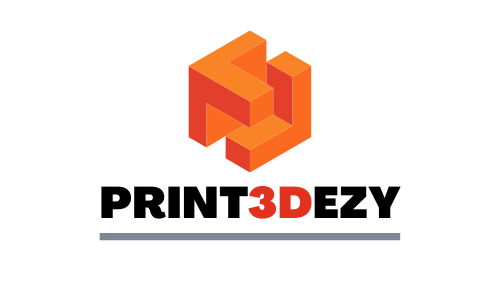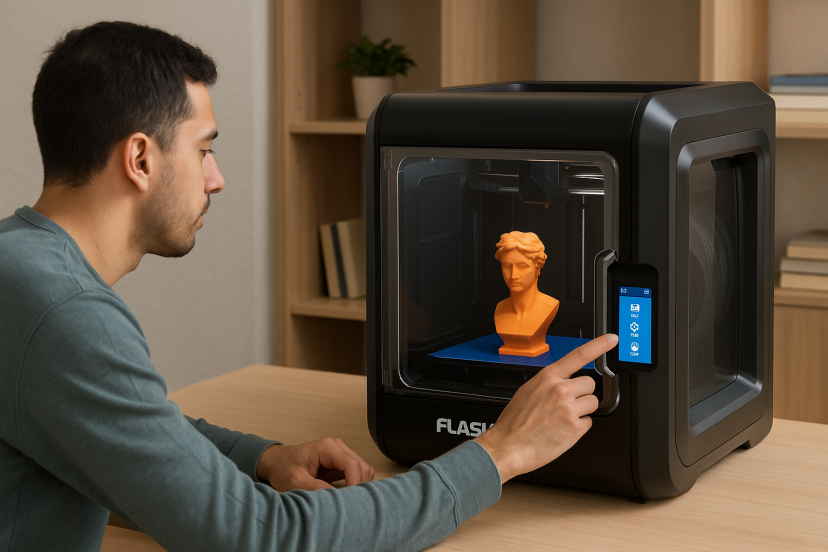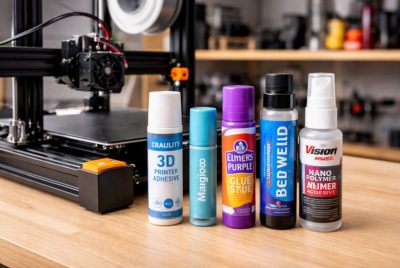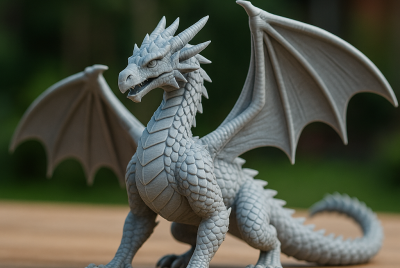FlashForge 3D Printing: Beginner Models & Creative Potential
Starting with 3D printing can feel confusing. The setup looks hard. The software feels tricky. You might worry about wasting time or filament if a print fails. These fears can stop you before you even start. FlashForge 3D printing makes it easy. The controls are simple. The bed levels itself. The prints come out right the first time. You can turn a sketch into a working part and replace something broken in minutes. You can make a gift that looks professional without years of training.
What is FlashForge 3D Printing
FlashForge 3D printing is the process of converting a computer model into a physical object using FlashForge’s line of 3D printers. The majority of their machines employ FDM (Fused Deposition Modeling) technology, in which molten thermoplastic filament is extruded through a nozzle and deposited layer by layer until the design is complete.
FlashForge has built a reputation for:
- Accessibility: Affordable, beginner-friendly printers that work in homes, classrooms, and studios.
- Ease of use: Simple interfaces, automatic bed leveling, and minimal setup requirements.
- Quality: Reliable prints with consistent performance.
- Versatility: Suitable for hobby projects, educational tools, prototypes, and even small-scale production.
Before printing, you’ll need a design file. Some users obtain free designs from web libraries, and others develop their own. Using trusted 3D modeling software , you may create anything from a basic phone stand to a complicated mechanical component. Once your design is complete, you use FlashPrint, FlashForge’s slicing software, to prepare it for printing by tweaking layer height, print speed, and support structures for best results.
FlashForge Adventurer 3
The FlashForge Adventurer 3 is the perfect starting point for anyone curious about 3D printing. Compact enough for a desktop and quiet enough for a bedroom or office, it’s a versatile machine that delivers quality without complexity.
Standout Features:
- Fully enclosed build chamber for improved safety.
- Click-in filament loading system—no tangles or tricky feeds.
- Built-in HD camera for monitoring prints remotely.
- Wi-Fi connectivity for cable-free file transfers.
Why It’s Great for Beginners:
The Adventurer 3 eliminates common frustrations like manual bed leveling. Its plug-and-play setup means you can be printing within minutes of unboxing. And with FlashPrint’s intuitive controls, you can start with pre-set profiles and gradually experiment with custom settings.
Beginner Challenge: Print a household item—like a cable organizer or key holder—during your first week. It’s an easy, functional project that shows you the practical side of FlashForge 3D printing.
FlashForge Adventurer 3D Printer
While the Adventurer 3D printer shares much with the Adventurer 3, it also caters to those who want more flexibility as their skills grow. It supports a variety of filaments—PLA, ABS, PETG—making it a good choice for experimenting with different materials.
Use Case Examples:
- Teachers printing custom classroom aids like math manipulatives or geography models.
- Hobbyists creating cosplay accessories and decorative items.
- Makers prototyping parts for personal inventions.
FlashForge 3D Printer Creator Pro
For makers ready to step up, the FlashForge Creator Pro offers greater capability. Its sturdy metal frame, heated build plate, and dual extruder system allow for advanced printing techniques.
Why It’s a Level-Up:
- Dual extrusion enables multi-color or multi-material printing.
- Heated build plate supports more filament types and reduces warping.
- Enclosed design keeps temperature stable for improved print quality.
Ideal Projects:
Functional prototypes, intricate multi-color art pieces, or engineering components that require more than one material type.
FlashForge 3D Printer How to Use
Getting started with FlashForge 3D printing is simpler than it looks. Here’s a step-by-step process:
- Unbox and Inspect – Remove packaging, check components, and place the printer on a stable surface.
- Install FlashPrint – Download FlashForge’s slicing software for your operating system.
- Load Your Model – Either download a free design or create one using 3D modeling software.
- Slice the Model – Adjust settings like layer height, print speed, and supports.
- Load Filament – Insert your chosen filament (PLA is best for beginners) and follow the loading instructions.
- Level the Build Plate – Many models offer automatic leveling to make this step stress-free.
- Start Printing – Monitor progress via the touchscreen or built-in camera.
- Remove and Post-Process – Use the removable build plate to take out your print, then clean or sand as needed.
FlashForge Finder 3D Printer
The FlashForge Finder is one of the brand’s most beginner-friendly models—ideal for classrooms, youth programs, or casual home use.
Why Beginners Love It:
- Quiet operation, perfect for learning environments.
- Detachable build platform allows for effortless removal of finished prints.
- Bright, colorful touchscreen interface.
Educational Impact:
Schools often use the Finder to teach STEM concepts, allowing students to design and print projects that reinforce lessons in science, math, and engineering.
Scientific Insights on 3D Printing Safety
Research has shown that desktop 3D printers can emit ultrafine particles and volatile organic compounds (VOCs) during operation. These emissions vary by filament type and print settings.
In a real-world study, the CDC/NIOSH found that ventilated enclosures can reduce particle levels by over 99% and significantly lower VOC concentrations. Many FlashForge models, such as the Adventurer 5M Pro, include enclosed chambers and filtration systems, making them safer for use in homes, classrooms, and offices.
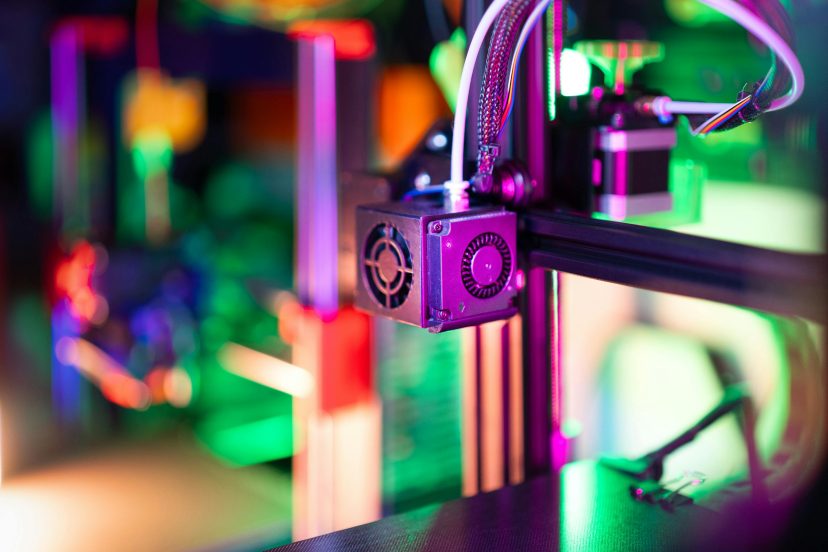
Why 3D Printing Feels So Rewarding
With FlashForge 3D printing, the transformation is as much personal as it is practical. Instead of waiting for someone else to make a solution, you create it yourself. That broken handle? Fixed. That personalized birthday gift? Made with care. That prototype for your side business? Ready for testing.
This shift—from consumer to creator—is empowering, and once it happens, it changes the way you see the world.
Final Thoughts
FlashForge 3D printing isn’t just about producing objects—it’s about unlocking creativity, problem-solving skills, and confidence. From your first simple print to advanced projects, each layer you build adds to your knowledge and expands what you believe is possible. Whether you’re a student, hobbyist, educator, or entrepreneur, FlashForge offers a printer to match your vision. Don’t just imagine your next idea—print it.
FAQ
What is 3D printing and what does it do?
It’s the process of creating a physical object from a digital file by adding material layer by layer, often using thermoplastics.
Who makes FlashForge 3D printers?
FlashForge is a global manufacturer known for affordable, reliable 3D printers for beginners and professionals alike.
What file type is FlashForge 3D printing?
Supported file types include .stl, .obj, and .3mf, all processed through FlashPrint software before printing.
Can FlashForge print multiple colors?
Yes—models like the Creator Pro and AD5X support dual extrusion for multi-color printing.
Can I use TinkerCAD with FlashForge?
Absolutely. Export your TinkerCAD design as an .stl file, then slice it in FlashPrint for printing.
